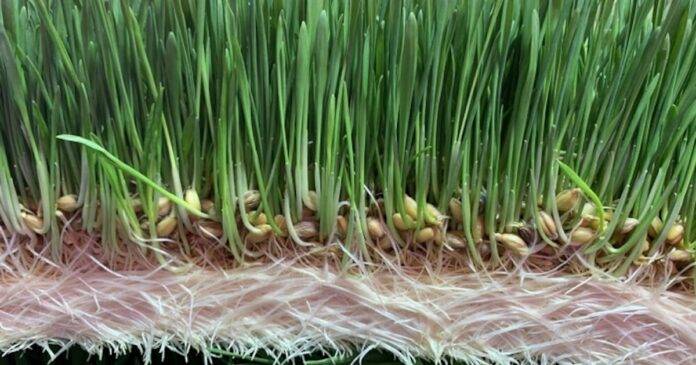“`html
The Forever Feed Innovation Center: Revolutionizing Livestock Feed Production
The Forever Feed Innovation Center, the inaugural feed mill of Forever Feed Technologies, is situated on a dairy and heifer farm in Hanford, California. This pioneering facility produces fresh Automated Sprouted Grain (ASG) daily, specifically designed to enhance the feed rations for both dairy and beef cattle. Notably, the operation utilizes only a fraction of the water typically required for cultivating field-grown alfalfa, highlighting its commitment to sustainability.
Forever Feed, co-founded by CEO Jack de Jong and Steve Lindsley, has developed this initial mill at one-third the size of a fully scaled-up version, which could potentially supply fresh feed for over 2,500 dairy cows. The vision encompasses the construction of commercial-scale mills that will collaborate with large-scale dairy farms to provide year-round fresh feed while enhancing feed efficiency and sustainability.
Despite the promising outlook, the challenge remains: no entity has yet succeeded in establishing a sufficiently large and economical system capable of delivering on all these fronts. Forever Feed aims to become the first to achieve this goal.
Insights from CEO Jack de Jong
In an interview with DairyReporter, CEO Jack de Jong shared insights regarding the inception of the Innovation Center. “I have been farming since the late nineties, operating in Hanford, California,” he stated. “A couple of years ago, I began exploring commercialized fodder feeding as a means for water conservation.” This exploration led to the co-founding of Forever Feed Technologies (FFT).
De Jong elaborated on the development timeline, explaining, “We went through our design phase, finalized our ultimate design, ordered the required materials, and began construction. We are now transitioning into our operational phase.” However, he noted that one of the significant challenges has been identifying the appropriate seed varietals and methodically scaling the operation.
“We have been experimenting with various local varietals to determine which ones perform best,” De Jong explained. “Transitioning from small-scale to commercial-scale operations presents its own unique challenges.” As he noted, “There are significant differences between using a two-by-two tray and a pallet-sized tray containing 24 pounds of seed, which produces a substantial output in just six days.”
Innovative Design and Future Developments
The design phase, commenced in 2022, involved collaboration with JR Automation, a division of Hitachi, Ltd., to integrate proven material handling technologies with FFT’s patent-pending indoor growing protocols. This innovative combination enhances the mill’s reliability, ensuring it meets the high demands of supplying fresh feed year-round to large dairy and beef operations.
The initial phase of the commercial-scale mill is designed to produce up to 50 tons of ASG daily. When combined with Total Mixed Ration (TMR), this ASG fodder is anticipated to improve digestibility in cattle diets, thereby enhancing feed efficiency. However, these expectations await validation in real-world applications.
De Jong mentioned, “We expect feed efficiency improvements to manifest in one of two ways: either cows will consume less feed while maintaining the same production levels, or they will consume the same amount and increase their output.” This enhanced feed efficiency is expected to be a crucial driver of return on investment (ROI), alongside significant savings on inputs such as water, diesel, pesticides, and fertilizers.
Looking Ahead
With the initial phase of development now complete, the company is poised for its next steps. “We will begin transitioning from heifer feeding to dairy cattle feeding, studying its effectiveness across various farm conditions and formulations,” De Jong stated. “No one is currently operating at this density, concentration, and level of automation. Previous efforts have generally been too small for commercial dairy operations.”
How the Feed Mill Operates
The feed mill is equipped with a climate control system powered by solar panels. The ASG grows in trays for approximately six days, depending on the specific recipe, while a computer system meticulously monitors the conditions of each tray. Once the fodder reaches maturity, it is harvested and prepared for inclusion in the animal’s TMR.
Despite the promising progress, critical steps remain, including the development of TMR recipes and ROI calculations. The team is focused on refining these details without overpromising results. “We want to ensure that our protocols, recipes, and growing methodologies are both repeatable and consistent,” De Jong concluded.
In summary, the advancements made at the Forever Feed Innovation Center mark a significant milestone. “Completing this center allows us to refine the mechanical systems and protocols essential for constructing our larger commercial-scale feed mills,” De Jong affirmed. “A single commercial-scale feed mill can provide fresh feed to over 2,500 dairy cows, and we plan to begin construction on these mills as early as this year.”
“`




